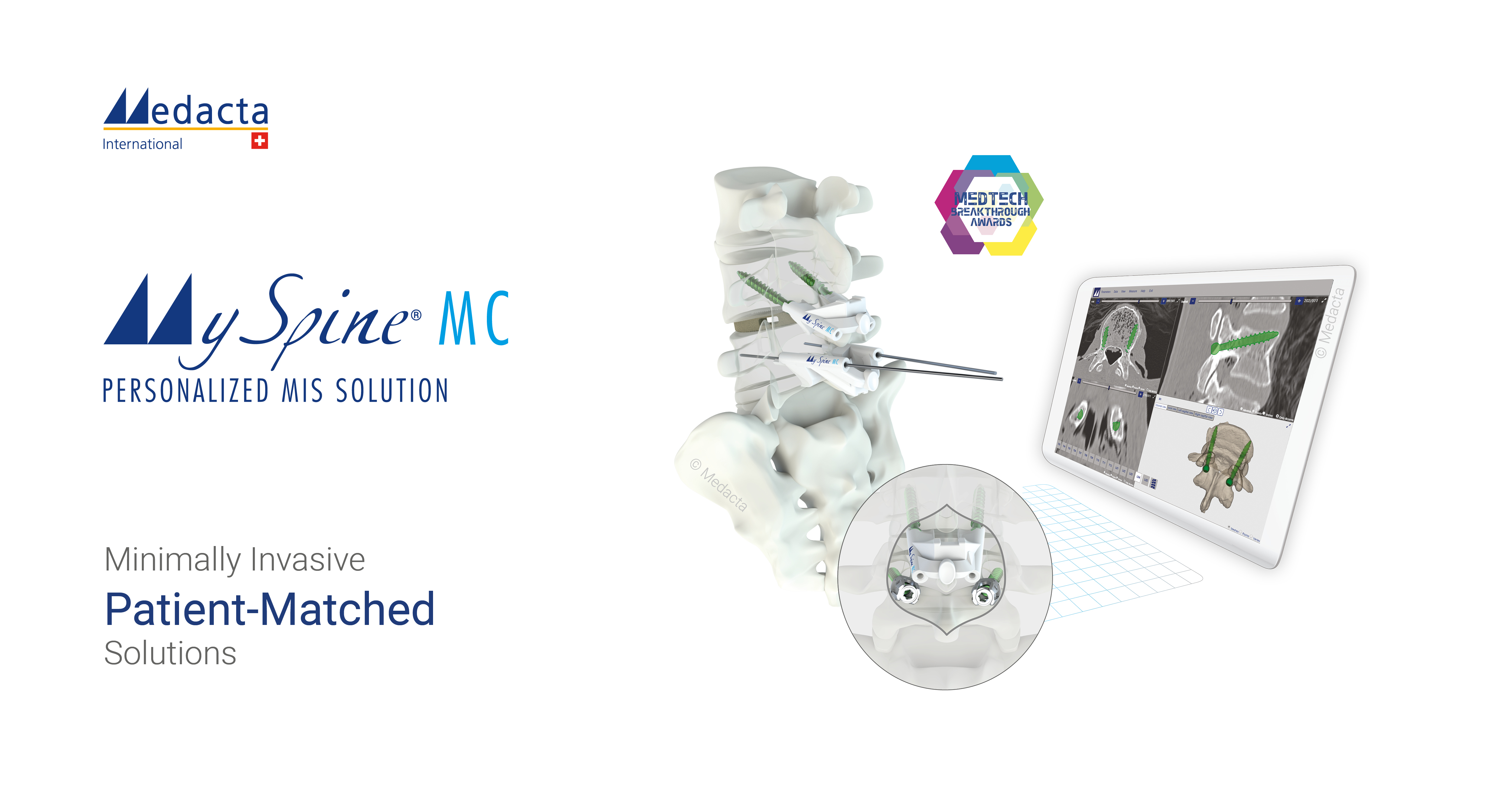
Thanks to its muscle-sparing technique, muscles are gently manipulated and a small skin incision is performed. The Minimally Invasive approach can potentially reduce the surgical trauma compared to other techniques, because back muscles are preserved, leading to:
-
Decreased post-operative pain [2,3]
-
Shorter rehabilitation [2,3]
-
Shorter hospital stay [2,3]
-
Faster return to daily activities [1,2,3]
-
Small skin scar [2,3]
-
Less blood loss [2,3]
-
Reduced complications [4]
Furthermore, the most recent study on MIS MySpine MC demonstrates the positive impact on the healthcare systems since its adoption.
Dr. Marengo and Dr. Petrone have recently published the following documentation:
-
A detailed operative video (Abstract) depicting the advantages of a 3D preoperative planning, the surgical approach and the innovative 3D printed technology for a guided procedure.
-
A retrospective study (Abstract) which reports that MIS MySpine MC allows for a limited soft tissue dissection, while increasing the pedicle screw position accuracy for a safe, minimally invasive surgical technique. In this study, the MIS MySpine MC technique, compared to free-hand CBT, leads to a significant reduction of the following parameters:
-
procedural time (-34%)
-
X-ray dose (-33%)
-
hospital stay (-37%)
Moreover, the guided technique led to:
-
NO complications
-
improved accuracy (+15%)
This is further evidence that MIS MySpine MC is a safe and minimally invasive personalized technique.
REFERENCES
[2] Marengo N. et al., Cortical Bone Trajectory Screw Placement Accuracy with a Patient-Matched 3-Dimensional Printed Guide in Lumbar Spinal Surgery: A Clinical Study, WORLD NEUROSURGERY, June 2019
[3] Marengo N. et al., Cortical Bone Trajectory Screws in Posterior Lumbar Interbody Fusion: Minimally Invasive Surgery for Maximal Muscle Sparing—A Prospective Comparative Study with the Traditional Open Technique, Clinical Study, February 2018
[4] Petrone S. et al., Cortical bone trajectory technique’s outcomes and procedures for posterior lumbar fusion: A retrospective study, Journal of Clinical Neuroscience, April 2020
